![]()
Philip Bernaldo Sabado
Lucy Peros | All photos courtesy Sabado ‘Ohana | All art images by Phil Sabado
French Impressionist artist Edgar Degas said “Art is not what you see but what you make others see.” Henry Ward Beecher, an American clergyman and social reformer had this to say about artists. “Every artist dips his brush in his own soul and paints his own nature into his pictures.”
This month’s featured Sakada Offspring, Philip Bernaldo Sabado is a well-known Filipino artist not only here on Maui but all of Hawai‘i and the world. His artwork especially his paintings can be seen and enjoyed by many everywhere.
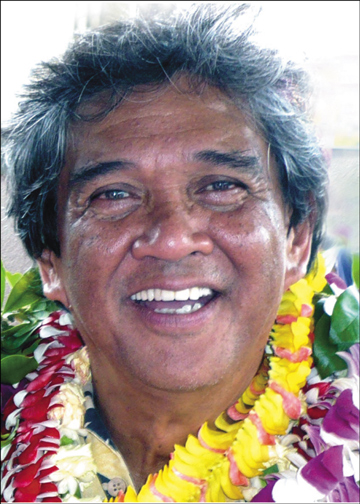
Philip was born on March 8, 1945 in Waialua, O‘ahu, Hawai‘i. He attended Maunaloa Elementary, Molokai High School, Honolulu Academy of Arts, receiving Certificate of Completion: Design/Illustration/Fine Art, University of Hawai‘i where he received his teaching degree and Fine Arts, Pasadena Art Center College of design, Illustration Major, Columbia University, Paris, France, Illustration major, Chaunard College of design in Los Angeles, and Otis/Parson School of Design and Long Beach State—Study of Human.
From 1963–1966, Philip was in the U.S. Army, 82nd Airborne Division.
Philip is married to Mary Christine Sabado, 53 years married. They have six children: Paulo Bernaldo Sabado 53, Manager Arch of Maui. He and his wife Tara Sabado have three children. Erin Felix Sabado, 51, Manager Sabado Wailea Gallery. He and his wife Kindra have two children. Severina Maria Sabado Lopez, 49, owns “A Maui Day.” She and her husband Frankie Lopez have three children. Ian Sabado, 37 works as an IT in San Diego. He and his wife Elena have no children. Jackie Sabado Eitel, owns Paradise Now in Wailuku. She and her husband James Eitel have three children. Alipio Sabado, 34, is engaged and works in construction. Philip has twelve siblings.
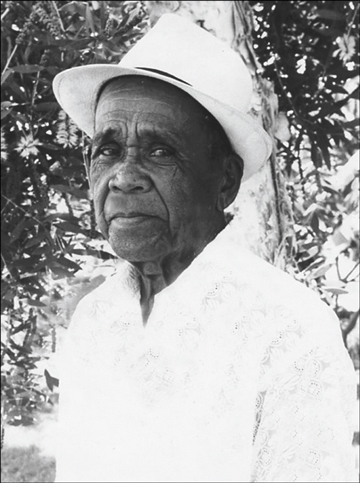
Philip’s favorite quotation is: “What others consider mythology, I consider history.” Philip has an array of art experiences: Portuguese-Puerto Rican Murals – National Heritage Center (2018), Kaiser Hospitals Internal art Corporate Office (2018), Westin Corporation large mural for Lobby (2017), Kaiser Corporation Committed to four hospitals (2016), Pōmaika‘i Mural – Mosaic Tile (2015), Bank of Hawai‘i Mural – Glass Tile (2015), Ke‘ena Kuakahi/Sabado Art Studios Wailuku, Maui (2015–1993). In his art studio, besides a gallery, he has adult and children’s art classes, private and public commissions, murals and large art projects, and watercolor and oil paintings. Other art experiences are Lahaina News, Art Director Lahaina, Maui (1993–1989), Gilbert & Associates – Freelance Art Kahului, Maui (1986–1993). He designs brochures, advertisements, logos, letterheads, business cards, menus, etc. At Creative Communication Hilo, Hawai‘i, (1984–1986), he designed advertisements, logos, brochures, hotel and restaurant signage.
Philip is so well known for his great artwork he received many private and public commissions. The following is a list of all of them: (1) Hilton Hawaiian Village, Ali‘i Tower (2012): Ahuli‘i (Feather Capes) – watercolor paintings (18″ x 24″) on French Arches paper and prints for 450 Rooms. Consultants: Gina Bacon Kerr, Philpott Design Agency; JT Suzuki, Hilton Head Corporation Projects Coordinator. (2) Saint Marianne Cope (2012): commissioned by Diocese of Honolulu (Saint that succeeded St. Damien on Molokai). Medium; watercolor on French Arches paper: 18″ x 24″ Consultant Bishop Larry Silva. (3) Hawai‘i Nei Institute (2012): commissioned portrait Kumu Roselle Bailey. Commemorative poster. Medium: watercolor on French Arches paper 18″ x 24″. Historical Consultant: Kumu Roselle Bailey. (4) Saint Kateri Tekakwitha (1212): “Lily of the Mohawks” -original watercolor 18″ x 24″ commemorative poster of Saint of the Native American tribes commissioned by the Catholic Parish of San Diego. (5) Saint Damien of Molokai (2009): Commemorative poster 18″ x 24″ commissioned by the Diocese of Honolulu from original watercolor on French Arches paper. Advisors: Monsignor Terry Watanabe, St. Theresa’s Parish; Bishop Larry Silva, Archdiocese of Honolulu. (6) Hilton Hawaiian Village (2002): Queen’s Bath oil painting 16′ x 6’ for Kalia Tower Spa and three original oil paintings 48″ x 36″ of Hawaiian Ali‘i’s for Ali‘i Tower. Consultants: Gina Bacon Kerr, Philpott Design Agency; JT Suzuki, Hilton Head Corporation Projects Coordinator; Woody Kirtley, Art Representative – Graphic Works Collection; Kumu George Kanahele. (7) Year of the Hawaiian (1987): “Kalakapu” (Sacred Sunshine) – poster12″ x 24″ for Hula Kahiko celebration of Hawai‘i. Consultants: Kumu Johnny Lum Ho; Lyons Naone, Year of the Hawaiian Committee. (8) “Kanyaku Imin” (1985): Commemorative poster 18″ x 24″ for the 100th Anniversary of Japanese Immigration to Hawai‘i commissioned by The Hilo Japanese Chamber of Commerce. Original watercolor on French Arches paper and was gifted to the Emperor of Japan by the people of Hawai‘i island.
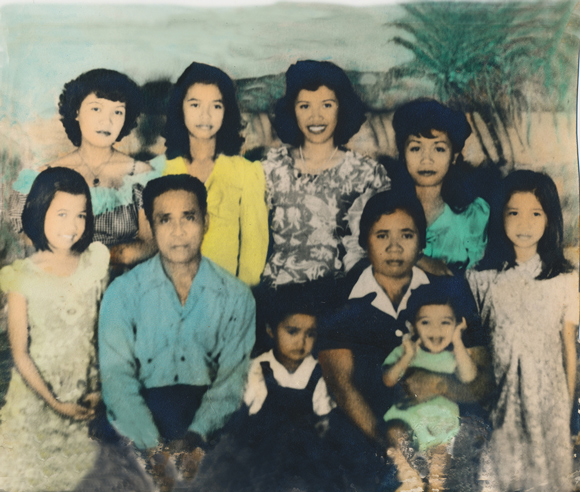
Philip received several Leadership Awards in the Field of Art: 2008 Pundy Yokouchi Award, “Maui Artist of the Year” from the Maui Arts & Culture Committee, 2005 City and County of Maui – “Maui Artist of the Year,” 1982 Selected one of the top 50 Illustrators to study with seven major illustrators of United States in Columbia University, Paris, France. 1980 Selected member of Los Angeles Society of Illustrators. 1979 Selected of Art Directors Club of Los Angeles.
On the local level, Philip Sabado is such a humble, patient children’s art teacher. He can teach art skills even to the most kolohe (naughty), misbehaved kids. With him, they produce beautiful artwork!
Philip’s mother, Severina Blen was originally from Dolores, Abra, Philippines. His father, Felix Sabado was from Santiago, Ilocos Sur, Philippines. They came to Hawai‘i in the 1930s as single individuals. However, according to Philip, there was an incident that happened and that Felix was going to be deported back to the Philippines. But arrangements were made for him to marry Severina so he wouldn’t be deported. That’s how the Sabado Clan began. There were nine children in the Sabado family. Three were born in Honoka‘a, Hawai‘i. Then another three were born when they moved to Kaua‘i. Their third move was at Wailua, O‘ahu and three more were born there. Their last move was to Molokai when Philip was only four years old. Felix Sabado worked in the sugar cane plantation while Severina was a housewife taking care of her household and children. To help with the family income, she took in laundry. Philip mentioned his mom and sisters did the washing and ironing while Philip was the delivery boy.

Felix had a certain talent in making wine from sugar cane and pineapple. He was also a talented musician playing the guitar for his family. Philip claims he learned from his parents the value of togetherness in harmony doing things together as husband and wife till death do they part. He also learned the value of gratefulness, being grateful for the basic necessities of life. He appreciates his brother-in-law Rehino for showing him how to hunt and fish. He was truly his mentor. He also learned from his sisters not to be afraid to take risks. They encouraged him to do what he wanted to do in life. Philip was the youngest of the siblings.
Christine Sabado, Philip’s wife is Caucasian by ethnicity. She is truly, however, a Filipino at heart. She embraced the Filipino culture when she married Philip fifty-three years ago. She wrote a very endearing story about her first meal with Philip’s parents and it is worth sharing. This is her story:
In the kitchen, in the center of the table, sat a large glass that held spoons and forks; rice was served on the sideboard attached to the stove. A steaming bowl of soup with vegetables and pork was placed in the center of the table. The vegetables had an unfamiliar consistency for me. They all appeared very fresh and homegrown, all dark in color, with a texture very different from the Irish boiled potatoes and carrots and common vegetables I knew from my childhood. The strong smell of garlic and ginger root and bay leaf was assaulting all the senses and filling the room as more soup was ladled into the bowl from the steaming pot.
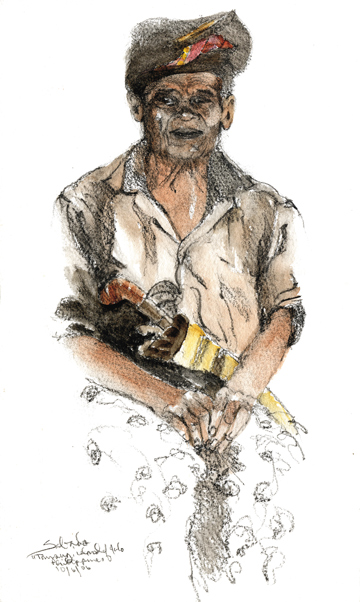
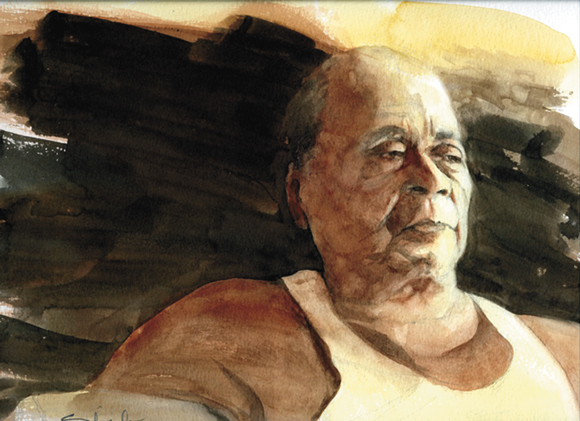
Without protocol Papa, quietly prepared Mama’s plate and carefully placed her rice in the center, a precise mound, a scoop. He then ladled the soup of dark green vegetables from a weathered white ceramic bowl, as the bowl filled, I saw the charming design of golden wheat. Philip followed suit and scooped rice onto my plate as well. Mama sat near the window, directly across from me. I could not keep my eyes from her face. She was glowing and beamed like a proud bird with her family surrounding her, all smiling and fussing about. They were all chirping and busy around us. The lines of age softened on her frail face in the natural glow of the diffused light as golden as the yellow beams that filtered through the checkered curtains. Philip placed my plate before me and ladled more of the soup and vegetables onto my rice and then onto his own plate. He sat between his parents; a brief moment with eyes closed and intoned a pule a prayer before they began eating with great passion.
Suddenly all was silent as every eye in the room intently watched me. Smiling to all present I exclaimed haltingly, “Oh, it looks and smells wonderful.” No one moved to serve him or herself. I glanced at Philip with a questioning expression. He was already engrossed, busy slurping at his soup, showing his enjoyment of the meal. He looked up from his now half-empty bowl and saw my face to say: “They won’t eat until Mama and Papa and we have eaten, as how!”
Christine’s philosophy in a successful marriage is: “When you marry your husband or wife, you are also marrying the whole family.”
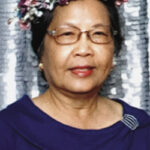 Lucy Peros is a retired schoolteacher, having taught at St. Anthony Grade School and Waihe‘e Elementary School. Both of her late parents, Elpidio Cachero Cabalo (a 1946 Sakada) and Alejandra Cabudoy Cabalo of Hāli‘imaile, worked for Maui Land and Pine Company. Lucy now enjoys retirement and has time to join other seniors in the Enhance Fitness Program under the Department of Aging three times a week. She also attends the line dancing class and other activities at Kaunoa and joins other Waihe‘e School retirees when help is needed at the school. Lucy also devotes some of her time to activities at Christ The King Catholic Church. She enjoys writing and reading in her spare time.
Lucy Peros is a retired schoolteacher, having taught at St. Anthony Grade School and Waihe‘e Elementary School. Both of her late parents, Elpidio Cachero Cabalo (a 1946 Sakada) and Alejandra Cabudoy Cabalo of Hāli‘imaile, worked for Maui Land and Pine Company. Lucy now enjoys retirement and has time to join other seniors in the Enhance Fitness Program under the Department of Aging three times a week. She also attends the line dancing class and other activities at Kaunoa and joins other Waihe‘e School retirees when help is needed at the school. Lucy also devotes some of her time to activities at Christ The King Catholic Church. She enjoys writing and reading in her spare time.
